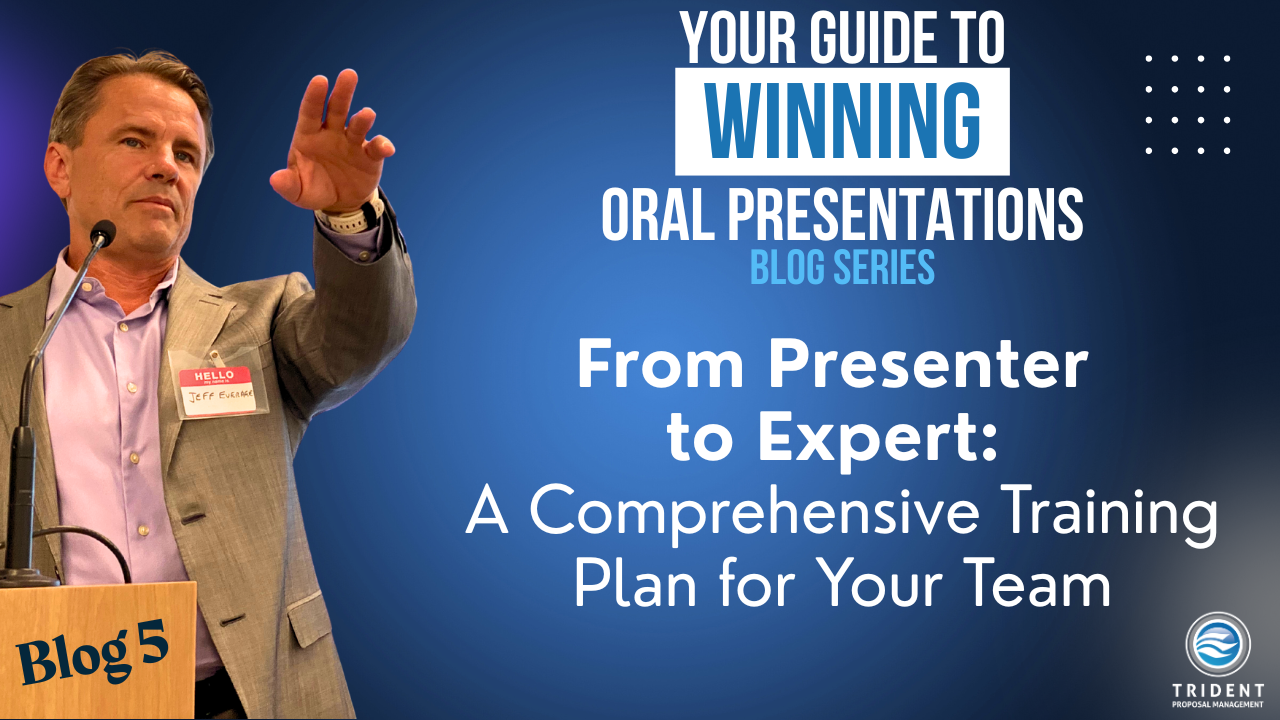Make it easy for your selection board
Jan 19, 2021
Whether it is a best value, LPTA, T&M or an FFP solicitation, if you want to give your bid a better chance, make it easy for your selection board to grade it.
“No more than ten 8.5” by 11” pages of single space content using 10pt Times New Roman and one-inch margins”. If you have written a proposal in the last ten years, you have seen a variation of the above specifications on the RFP instructions. If you close your eyes and let your imagination run, you can see them: the team of “geniuses” that decided to use legal size pages with quarter-inch margins and 7pt arial narrow font to jam their company’s encyclopedic size proposal in front of the selection board.
I can’t attest to whether they won or lost their bid, but I’m willing to bet that there is a KO out there reading this blog who is saying “yup, I remember them” – and that, is not a good thing. Although we are moving more and more in the direction of proposals being submitted through digital portals, the genesis of these and other specifications remains – make it easy for your selection board to evaluate your proposal.
While “content is king”, form, fit and function (how you package it) are important as well. If you want to give your proposal a better chance at getting selected for an award, here are four suggestions to follow:
- Use the same terminology that the solicitation uses, and answer it following its outline.
- While parroting is a complete “Oh no!” (If you are into Tik Tok, I’m sorry about what you just heard in your mind), don’t use terminology that forces the selection board to guess what you mean. They can only evaluate what is written, so your language best be clear. If the solicitation requires your solution to execute “conjunction analysis” of satellites in geostationary orbit, don’t respond by stating that your system will perform “CBDR analysis of orbital artifacts”.
- Don’t rearrange your proposal narrative to tell the story like you want to tell it. Tell it in the sequence the evaluators want to hear it. There are no points earned for style flashbacks and flashforwards in proposals. You only get points if the evaluation board finds your relevant answers. While we are at it, don’t bury the perfect answer to a requirement in a random location of your proposal. If the requirement is presented on section 3.a.2, then my suggestion is that you present your response in the form of an answer (R.I.P. Alex Trebek) and in your proposal’s section 3.a.2.
- Be painfully clear on how you meet the requirements.
- Your first mission is to be compliant. So please, make sure that you fully answer all questions and address all requirements. This is table stakes.
- That said, you have to show your added value. If the specifications say that the solution must have a useful life in excess of five years, don’t parrot back that your system “will have a useful life in excess of five years”. If you know the system you are bidding will have a useful life of seven years, say so. It will show that you meet and exceed the requirement; and by how much. This is also far better than the ever vague “we meet and exceed”.
- Make it easy for the selection board to understand what your company is offering.
- Don’t assume that the selection board’s native language is “proposalese” or that they know every possible trendy trade slang term you feel inclined to throw into your response. Use active voice declarative sentences. They still work.
- If the solicitation is asking for a solution or a solution that can be delivered as a service (say for example software, or software as a service [SaaS]) and further, the solicitation says that it should be priced either as FFP or “per use”, don’t answer both questions with one “yes!”. Take the time to articulate each of the combinations you would offer so that your proposal may be effectively and correctly evaluated.
- “Show me” is far better than “tell me”
- There are evaluation board members in honest danger of losing their eyes if they read once more a single phrase that begins with “we understand…”
- Tell me if you have ever been here. You are traveling abroad (for the purpose of this example, we are past COVD19) and you ask a local “do you know how to get to…” and they answer “yes, yes I do.” – This is exactly what your team looks like when you write “we understand…” and parrot back the specification. Explaining how you would go about meeting a requirement shows the depth of your knowledge and also how you would differentiate your solution from the others competing for the business.
We humans prefer easy. This is sometime described as “cognitive fluency”. We gravitate to those things that are made “easy” for us to understand and process. Product managers at companies like Apple and Tesla make it “easy” for the user to have an “experience”, and inarguably, they have been successful in finding their target audience. Make it easy for your selection board to evaluate your proposals. Don’t let your company spend hundreds of thousands of dollars developing great solutions only to screw up the pitch.



